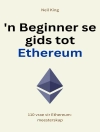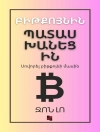This book presents an innovative framework for enhancing creativity in decision-making by applying systems thinking principles and tools. It is based on the premise that creativity is not a fixed trait that some people have and others don’t, but a skill that can be learned and improved with practice and guidance. The book also argues that decision-making is not a linear or mechanical process that can be reduced to simple rules or formulas, but a dynamic and creative process that requires holistic and systemic thinking.
The work also shows that systems thinking is not a complicated or abstract theory that only experts can use, but a practical and powerful tool that anyone can apply to understand and improve complex situations. The framework consists of six steps: problem identification, idea generation, idea selection, idea development, idea implementation, and monitoring and evaluating results and feedback.
Readers will learn to use the framework to solve complex problems and generate innovative ideas in any context and domain. Through the systematic integration of existing models into a unified framework, the book contributes to ongoing dialogues regarding effective decision-making processes. It critically evaluates prominent models like the Creative Problem-Solving Model, the Rational Decision Making Model, and the Intuitive Decision Making Model. Researchers seeking insights into incorporating creativity into decision-making will find this book to be a valuable scholarly resource.
İçerik tablosu
Chapter 1: Introduction: Creativity Loops-Based Decision Making: A Systems Thinking Approach.- Chapter 2: Review of Literature and Models on Creativity and Decision Making.- Chapter 3: Creativity Loops–Based Decision Making (CLBDM): A Novel Framework for Enhancing Creativity in Decision Making.- Chapter 4: Problem Identification and CLBDM.- Chapter 5: Idea Generation and CLBDM.- Chapter 6: Idea Selection and CLBDM.- Chapter 7: Idea Development and CLBDM.- Chapter 8: CLBDM and the Idea Implementation Creativity Loops.- Chapter 9: Monitoring and Evaluating the Results and Feedback with CLBDM.- Chapter 10: CLBDM and A Way Forward.
Yazar hakkında
Hassan Qudrat-Ullah is a professor of decision sciences with the School of Administrative Studies at York University, Toronto, Canada. Hassan has over 20 years of teaching, research, industry, and consulting experience in the USA, Canada, Singapore, Norway, UK, Korea, China, Saudi Arabia, Latvia, Switzerland, Spain, and Pakistan. He is a well-known scholar in decision sciences, energy policy modeling, and system dynamics areas. He has authored and edited over 150 refereed publications including 17 books (including edited volumes), 43 journal articles, and numerous conference proceedings and presentations. In 2017, he won York University’s Faculty of Liberal Arts and Professional Studies’ Excellence in Research Award.












